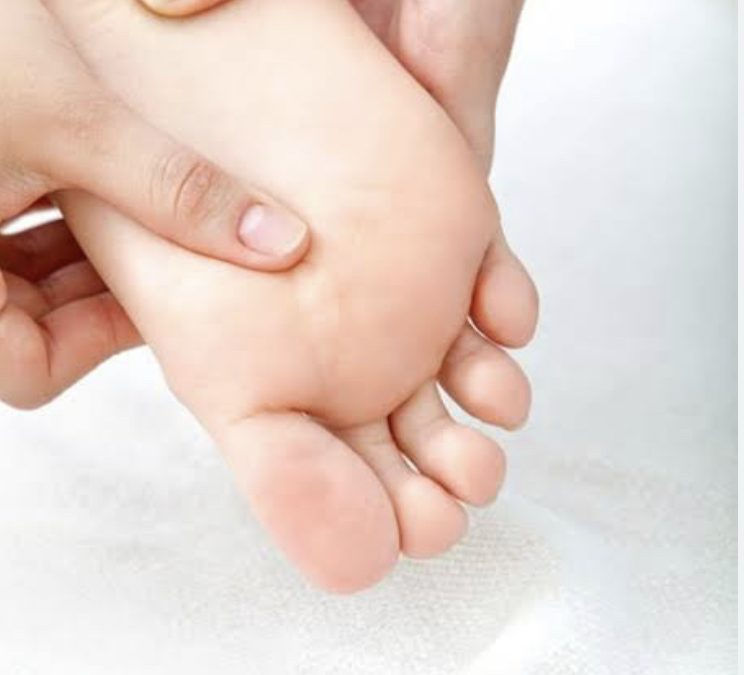How To Manage Bunions Naturally (Without Surgery)
- Dr. Angela Walk

- Jun 22
- 4 min read
Updated: Jun 25

Bunions—medically known as Hallux Abducto Valgus—are one of the most common and misunderstood foot conditions.
While they are often thought of as a hereditary deformity, the truth is: bunions are largely a result of modern footwear.
In this post, we’ll explore the true cause of bunions, why they form, how to recognize early symptoms, and the most effective natural strategies to manage and slow their progression.
What Exactly Is a Bunion?
A bunion occurs when the big toe drifts inward, progressively dislocating off the first metatarsal.
This causes the metatarsal head to become exposed, creating the familiar “bump” on the inside of the foot at the base of the big toe.
Contrary to popular belief, this bump is not a growth of bone, but rather the protrusion of the metatarsal head as the big toe angles toward the second toe.
Over time, this misalignment can lead to joint instability, arch collapse, pain, inflammation, and deformity of the forefoot.
Common Myths About Bunions
“Bunions are genetic.”
Not exactly. While the bunion itself is not inherited, certain anatomical traits that predispose you to bunions—such as wide feet, joint hypermobility, and soft tissue laxity—can run in families.
These traits make certain people more susceptible to the damaging effects of conventional footwear.
“They’re caused by aging.”
Age may allow more time for the deformity to develop, but bunions are shoe-induced.
Babies are not born with bunions—they develop over time from wearing narrow, pointed, and elevated footwear that distorts foot alignment.
Signs & Symptoms of a Bunion
Bunions are more than just cosmetic—they can affect the entire mechanics of the foot. Common symptoms include:
Pain and tenderness at the base of the big toe
Redness, swelling, or bursitis (inflammation of the joint sac)
Callus formation or thickened skin near the bunion
Numbness or tingling from nerve compression
Instability of the first ray and weakening of the medial longitudinal arch
Toe crowding, hammertoes, and metatarsalgia from altered forefoot mechanics
How to Manage Bunions Naturally
Bunions often respond well to conservative treatment, especially in the early stages.
While severe cases may eventually require surgical correction, most people can reduce pain, improve alignment, and slow progression with the following natural methods:
1. Wear Natural, Functional Footwear
The most important step in managing bunions is to eliminate the root cause: restrictive footwear.
Look for shoes that are:
Flat (zero drop) from heel to toe
Flexible, allowing the foot to move naturally
Widest at the ends of the toes, not just the ball of the foot
This allows the big toe to return to a more natural position, reduces pressure on the joint, and encourages healthy foot mechanics.
Take a look at my Approved Shoe List of the shoes I approve and recommend for bunions and other foot conditions.
2. Use Toe Spacers
Toe spacers help realign the big toe, decompress crowded joints, and restore natural splay of the forefoot.
Wearing them daily (even inside wide shoes or at home barefoot) gradually trains the toes to return to proper alignment.
3. Perform Daily Bunion Mobility Exercises
Certain exercises can strengthen the surrounding muscles, improve joint range of motion, and reduce tension around the first metatarsal.
Try:
The Bunion Stretch:
Gently pull the big toe away from the second toe and hold for 20–30 seconds.
Using gentle pressure, massage the muscles between the first and second toe. There is often trigger points or tenderness.
Repeat several times daily to maintain range of motion.
Toe Press & Lift:
Press all toes into the ground, then lift just the big toe.
Reverse the motion and isolate movement.
Repeat 10 reps, 2–3 times per day.
Short Foot Exercise:
Engage the arch by pulling the ball of the foot toward the heel without curling the toes.
Hold for 5–10 seconds. This helps rebuild intrinsic foot strength.
4. Release Tight Fascia and Muscles
Tension in the toe flexors, calf muscles, or plantar fascia can pull the big toe further out of alignment.
Use a fascial release tool to target soft tissue adhesions in:
The arch of the foot
Calf muscles
Inner ankle and first metatarsal
This improves mobility and reduces compensatory tension across the forefoot.
5. Wear Bunion-Friendly Socks
Toe socks are designed to:
Reduce friction
Separate the toes
Minimize irritation inside shoes
While these don't fix the alignment alone, they’re great adjuncts for daily wear—especially if you’re transitioning out of narrow shoes.
What to Avoid
If you’re managing bunions naturally, it's just as important to avoid things that worsen the condition:
High heels or elevated footwear
Pointy or narrow-toed shoes
Tight socks or stockings that bunch the toes
Over-reliance on arch supports or orthotics (which can weaken foot muscles over time)
Final Thoughts from Dr. Angela
Bunions don’t happen overnight—and they don’t need to be fixed overnight either.
With time, consistency, and the right tools, you can:
Improve your foot’s alignment
Reduce pain and inflammation
Prevent progression of the deformity
Restore healthier foot mechanics without surgery
You have more control than you think. My goal is to empower you with natural, movement-based strategies that treat the root cause—not just the symptoms.
Best of Foot Health,
Dr. Angela Walk
The Plantar Fasciitis Doc

➡️ Work With Me







Comments